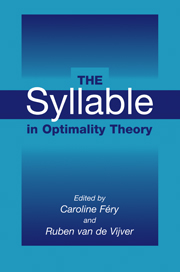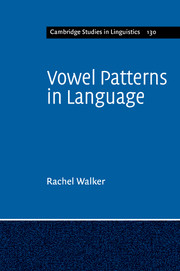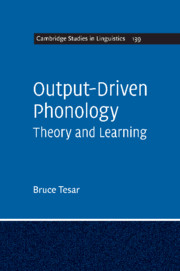The Syllable in Optimality Theory
This book provides an overview of the role of the syllable in Optimality Theory (OT) and ways in which problems that relate to the analysis of syllable structure can be solved in OT. The contributions to the book show that the syllable not only sheds light on certain properties of OT itself. They also show that OT is capable of describing and adequately analyzing many issues that are problematic in other theories. The analyses are based on a wealth of languages.
- Is the first book on this theme within the framework of Optimality Theory
- Discusses a wide range of languages
- Addresses and proposes solutions for theoretical problems
Reviews & endorsements
Review of the hardback: '... There is much to admire in this book … It is well worth the time and energy necessary to read and digest it, and will hopefully find the wide readership it deserves.' Comptes Rendus
Product details
December 2008Paperback
9780521087889
428 pages
210 × 150 × 24 mm
0.63kg
188 b/w illus.
Available
Table of Contents
- 1. Introduction Caroline Féry and Ruben van de Vijver
- Part I. Syllable Structure and Prosodic Structure:
- 2. Sympathy, cumulativity, and the Duke-of-York gambit John McCarthy
- 3. The controversy over geminates and syllable weight Stuart Davis
- 4. The syllable as a unit of prosodic organization in Japanese Haruo Kubozono
- 5. Prosodic weight Draga Zec
- Part II. Non-moraic Syllables and Syllable Edges:
- 6. Syllables and moras in Arabic Paul Kiparsky
- 7. Semi-syllables and universal syllabification Young-mee Cho and Tracy Holloway King
- 8. Onsets and non-moraic syllables in German Caroline Féry
- 9. Extrasyllabic consonants and onset well-formedness Antony Dubach Green
- 10. Beyond codas: word and phase-final alignment Caroline Wiltshire
- Part III. Segments and Syllables:
- 11. On the sources of opacity in OT: coda processes in German Junko Ito and Armin Mester
- 12. Ambisyllabicity and fricative voicing in West-Germanic dialects Marc van Oostendorp
- 13. The CiV generalization in Dutch: what Petunia, Mafia, and Sovjet tell us about Dutch syllable structure Ruben van de Vijver
- 14. The relative harmony of/s+stop/onsets: obstruent clusters and the sonority sequencing principle Frida Morelli
- Part IV. How Concrete is Phonotactics?:
- 15. The independent nature of phonotactic constraints: an alternative to syllable-based approaches Juliette Blevins.






